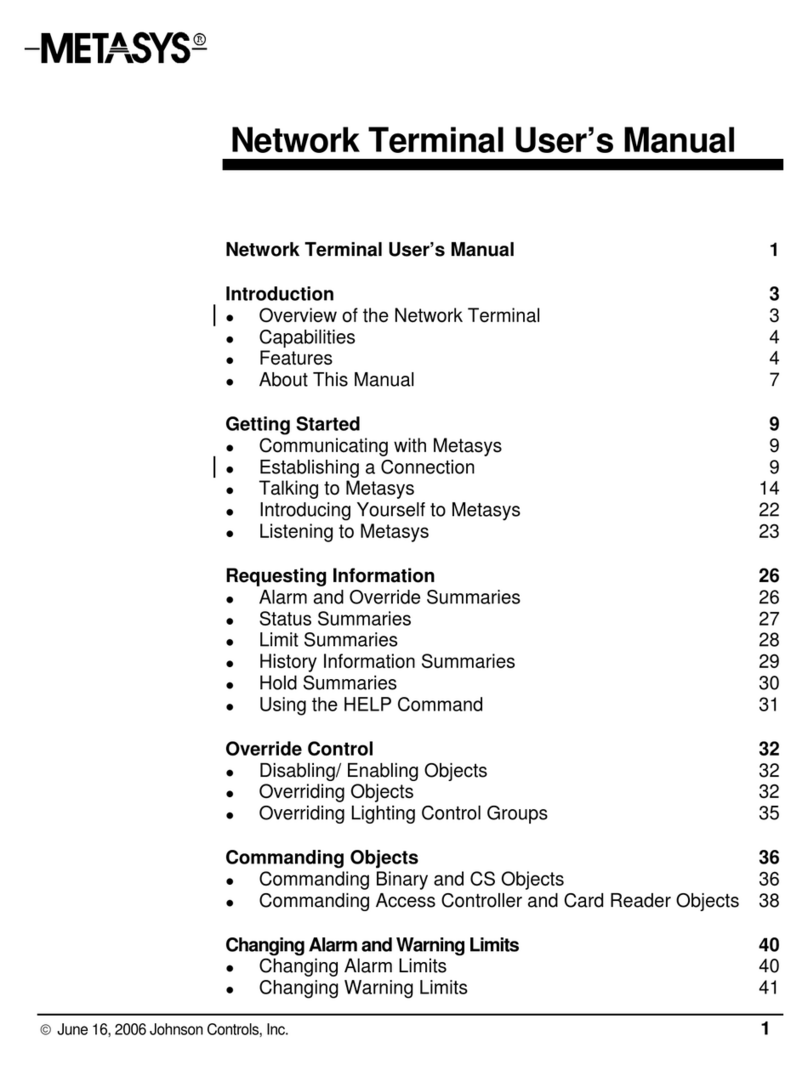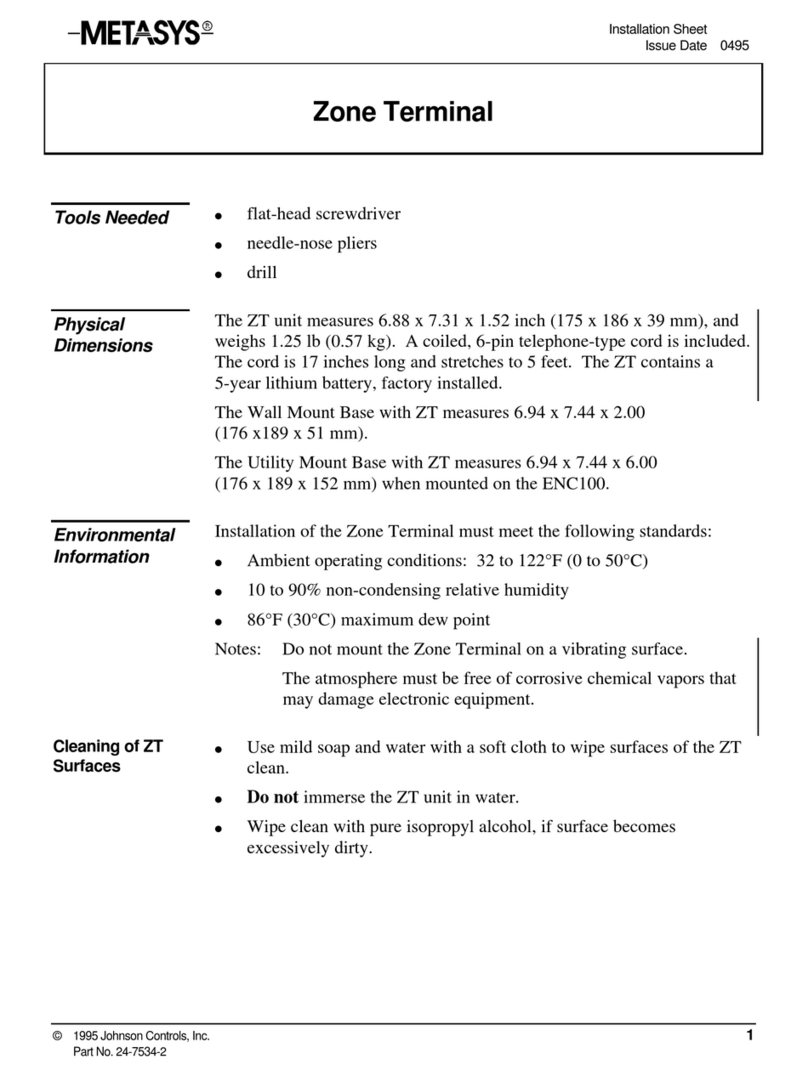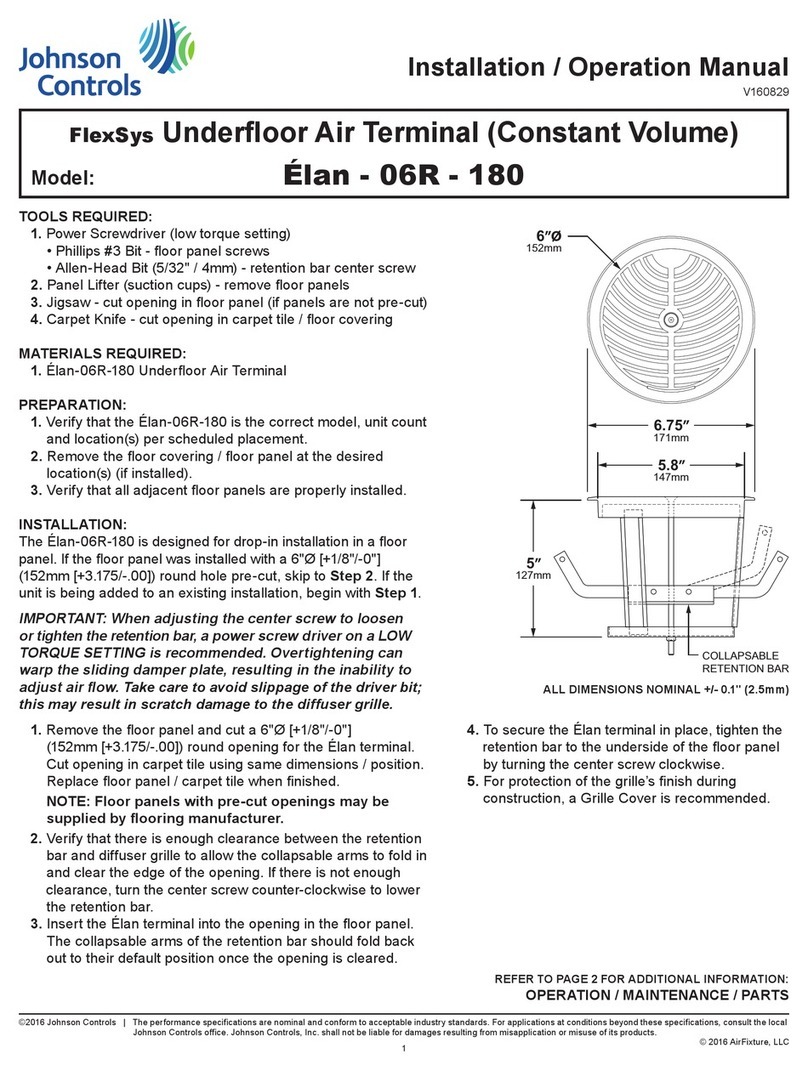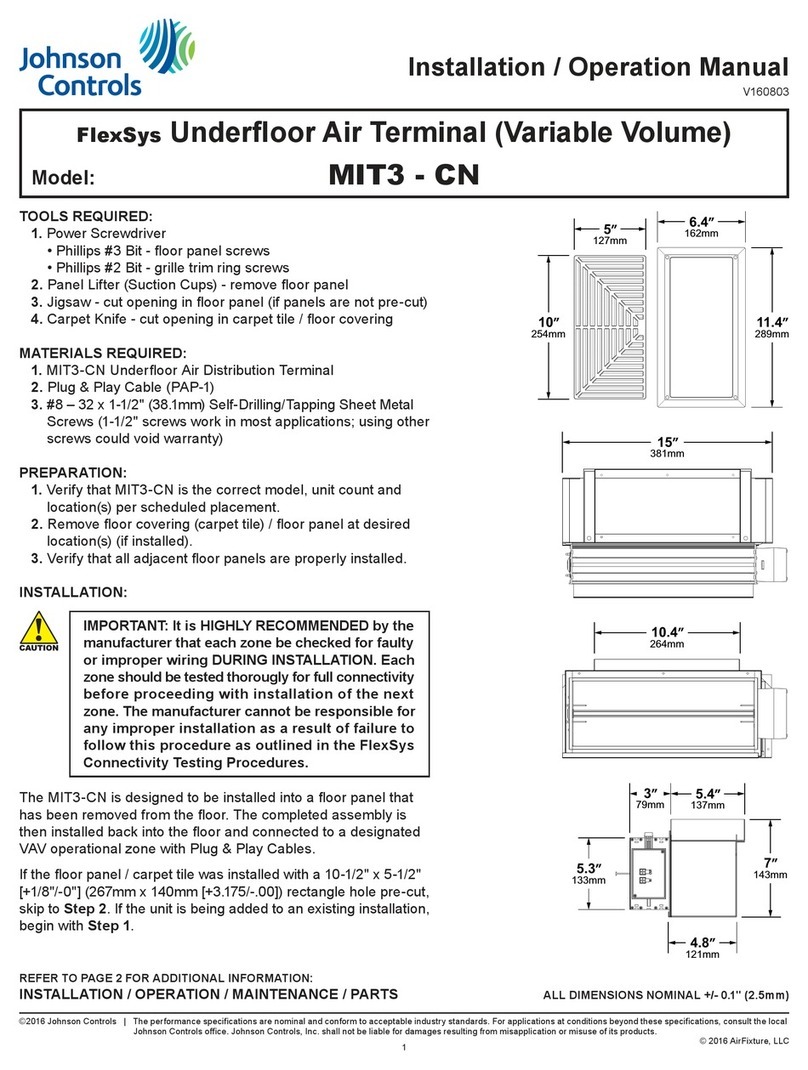
Clearance Requirements
Observe the following clearance requirements:
• The unit, including electric heat option, is ETL
listed for 0” clearance to combustibles.
Note: ETL is a mark issued by Intertek Testing
Services (ITS) ETL SEMKO Division.
• Ensure sufficient clearance to service the fan
assembly and access all electrical and control
enclosures, as indicated on the submittal drawing.
The bottom casing access panel requires sufficient
clearance to access fasteners and to lower and
slide panel horizontally until clear of bottom of unit.
Units equipped with an optional filter require
sufficient access to enable filter replacement.
• The unit should not make contact with the
structure above. Model TVS units equipped with
an induction sound baffle require a minimum of 5”
between the top of the unit and the structure.
• Line voltage and low voltage electrical enclosures
must have adequate service and working
clearances to meet requirements of National Fire
Protection Association (NFPA) 70 (NEC) or
approval by the authority having jurisdiction.
• Additional clearance requirements may be
required by local codes and are the responsibility
of the installing contractor.
Duct Connections
The connecting duct should be configured and
installed in accordance with SMACNA guidelines and
local code requirements.
Outlet
Observe the following outlet guidelines:
• Flexible connectors at the unit outlet are not
recommended. The sagging membrane of these
fittings can cause turbulence and higher air
velocities that generate noise. The lightweight
material allows noise to break out, which can
increase sound levels in the space below.
• Fasten and seal the downstream duct in
accordance with the project plans. Outlet
construction varies with the type of heat as shown
on the submittal drawing. Units with discharge-
mounted electric heaters accept a flanged duct
connection on all four sides. The end of the heater
control cabinet serves as a receiving flange. Sheet
metal screws no longer than 1/2” can be used. For
screw penetrations into the control enclosure, care
must be exercised to avoid damaging wire or
electrical components.
Inlet
Observe the following inlet guidelines:
• The inlet duct should be the same nominal size as
unit inlet. Straight duct yields the best airflow and
acoustical performance. Flexible duct should not
be used if critically sensitive acoustical
performance is required in the space directly
below the unit.
• Slide the duct over the inlet collar and fasten and
seal it in accordance with the project plans.
Electrical Connections
To connect power to the terminal, perform the
following steps:
1. Observe unit label electrical requirements before
connecting power to the terminal.
Note: Electrical wiring must comply with the
current revision of the NEC and local codes.
2. Make sure all disconnect switches are in the OFF
position while making electrical power
connections.
Note: More than one disconnect may be
provided; use tag-out/lock-out procedures. Unless
otherwise specified, the unit is suitable for a single
point electrical connection using copper
conductors only. Disconnect switches are optional
factory components. Refer to the wiring diagram(s)
located within the electrical enclosure(s) for
additional information.
IMPORTANT: The single-phase fan motor is
connected to L1 unless otherwise specified. For
three-phase systems, the electrical contractor should
alternate incoming service to help balance the
electrical load. Unless otherwise specified,
three-phase systems require a fourth (neutral)
conductor as shown on the wiring diagram.
3. Mount and wire field-installed electrical
components per factory supplied wiring diagram.
IMPORTANT: Factory wiring must not be
altered without written approval; violation of this will
void the warranty. Power source must be within 10%
of nameplate voltage for safe, reliable operation. If
incoming voltage is 10% above or below nameplate
voltage, contact the power company to correct
before operating the terminal.
Parallel Flow Fan Powered Terminal (Model TVS) Installation Instructions 3



























